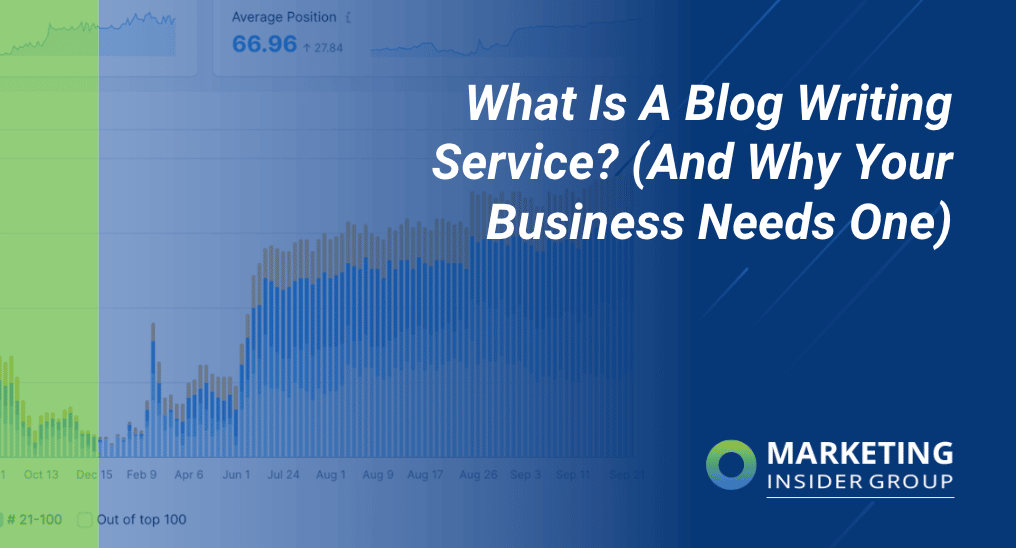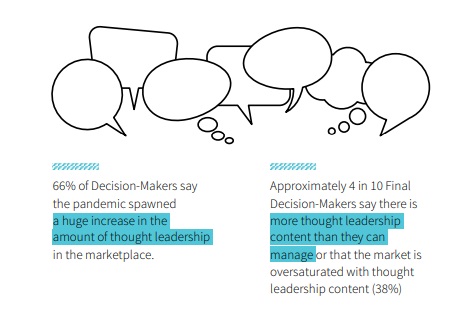In today’s digital world, your website is the lifeblood of your business. And blog articles are the heartbeat, providing a regular rhythm of education, thought leadership and storytelling that addresses your customers’ needs.
A weekly blog service allows you to keep a healthy and steady heartbeat. They provide regular mini-appointments with your audience. A Blog Service also helps you to rank for the important topics and keywords in search engines. And, best of all, they are the most cost-effective way to get leads and revenue from your website.
And yet, only about half of Fortune 500 companies maintain an active blogging presence. So even if you think that everyone is doing it (they are not), there is still tremendous opportunity to make your website stand out among the competition.
By adding consistent blog articles to your website and, better yet, hiring a blog service, you’ll get better ROI than any other marketing activity. Read on to learn why.
Quick Takeaways:
- The more frequently you blog, the more visitors, leads and conversions you get. Study after study has proved this.
- High quality content helps you build up brand authority and gain visibility in search rankings.
- When you outsource blog content creation, you don’t have to worry about frequency, meeting timelines, niche expertise, or ROI.
- Having a blog is essential to wooing today’s information-hungry customers. But most businesses don’t have the time, expertise, or budget to hire an in-house writing team.
- A blog writing service can turn your subject matter expertise into expertly written content.
The Case for Having a Blog
First, let’s just get one important matter out of the way: You have a blog, right? If the answer is no, you’re not alone. Some new businesses get too caught up in their day-to-day basic functions to start one. Others think blogging isn’t for them – it’s the purview of foodies, mommies, and health gurus. But nothing could be further from the truth.
If you’re shelling out big bucks for advertising, consulting, data analytics, and email nurture campaigns, plus the aforementioned website, the cost of running a blog is negligible by comparison. It’s the lowest hanging fruit on the tree, and you should be grabbing it as often as possible.
Think about these apples, ripe for plucking:
- Content marketing gives you three times the number of leads compared to paid search ads for every dollar you spend.
- You can boost your website traffic by up to 2,000% with high-quality blog content.
- When you blog, you’ll get 97% more links to your website than sites that don’t.
- Blogging is 13x more likely to yield a positive ROI than numerous other marketing activities, according to data from HubSpot.
- Companies who publish consistent blogs show 6x the revenue from traffic and leads attributed to their website.
- B2B companies will generate 88% more leads, while their B2C cousins will generate 67% more revenue through publishing blog posts consistently.
That’s a lot of value to leave on the table if you’re not blogging. Further, the leads you generate will cost 62% less than ones you generate through advertising, cold calls, brochures, or other outbound marketing methods.
Isn’t that enough reason for any company to jump on to the blogging train? Imagine what could happen if you missed out and your competitors get –
- 97% more traffic
- 88% more leads
- 67% lower cost
You’d have a heart attack, wouldn’t you?
I thought so. Bottom line, you need a blog to stay ahead of your competitors.
Converting More Customers
With a blog, you can engage directly with consumers better and more cheaply than with advertising. And, a blog gives you more control and focus over that dialogue than social media, for example. You get multiple opportunities and stages to convert readers to customers and to make existing customers repeat ones.

Think about your current marketing activities. They probably entail chasing customers in some way, such as by trying to get them to open emails or hoping they see your carefully placed (and expensive!) online ads. But, with a blog, consumers come to you. If they like what you post, they’ll come back, so you’ve just created a source of repeat traffic to your website and turned it into a dynamic and personalized face for your company.
Much of your blog content can easily be evergreen, meaning it is relevant for at least for several years, which means once you’ve done the work, it keeps working for you. You can update popular posts with new data as needed with a minimum of extra time.
Why is your content so compelling? Because it’s not poorly disguised advertising or pushy sales material. Instead, the bulk of your posts should be value-added content for readers, such as:
- Tips, how-tos, and tutorials for things that stymie most people but at which your business excels
- Aggregated industry trends, information and studies that save readers time by not having to hunt it down
- Interviews with thought leaders or guest posters, including round tables
- Questions and exercises to generate positive change
- White papers and case studies
- Videos and infographics
- Samples from upcoming long-form content, such as books
Another good use for your blog is to solicit feedback on your products or services. You may uncover and then be able to answer common objections during the selling process in ways you cannot elsewhere. Additionally, you can offer solutions to common customer service issues.
You can also utilize your blog to introduce new products and services or to announce events, although you want to sprinkle these posts in with the value-added material to avoid sounding too salesy.
Industry Authority and Search Rankings
Having a popular blog can quickly promote you to a position of industry authority, a desirable spot to be in. You’ll find it easier to network with others in your field, and you’ll develop a reputation as the one to turn to for expert advice.
With influence often comes that sweet number-one search ranking that companies covet. When potential customers search for terms related to your business, your name will appear at the top, increasing traffic to your website, where you can get people interested in your product or service and eventually sell them on it.
What are the best ways to reach that coveted top spot in Google?
- Always post high-quality, original content. Don’t “stuff” (overuse) keywords and use a post length that favors your topic and your audience, rather than what you’ve heard you must use.
- Include keywords in your blog post URLs.
- Do your SEO homework and make sure your keywords are what people are using in common online searches.
- Include a meta description for each post.
- Make your website easy to navigate and designed for the user. It must be fast loading and responsive to all types of computers and devices.
- Use available digital marketing tools, such as Buzzsumo or Google Trends, to help with your search engine optimization research.
- Promote your content well with connections and industry influencers.
- Consider paid promotion to boost your ranking. Sometimes organic promotion doesn’t cut it at first.
Why You Should Hire a Blog Service
“But,” you say, “I’m busy just running my business. I don’t have any time to write a blog. Besides, I practically got through English Composition 101 by the skin of my teeth. I’m an engineer/doctor/web developer/financial services professional, not a writer.”
So, if you’re convinced now that you should have a blog, or if you already have one but it’s been getting lackluster attention, how do you make it work?
For most businesses, especially those on the smaller side, the answer is to outsource blog writing. There are many benefits to hiring a blogging service and almost no disadvantages, and we’ll discuss how to overcome those later in this article.
What Is A Blog Writing Service?
A blog writing service is an outsourced marketing program that provides frequent blog articles for you to publish on your business website with the goal of gaining organic traffic and leads.
Some blog services like ours include keyword strategy, topic development, image and SEO optimization (meta descriptions, alt tags, etc), and reporting along with the weekly blog articles themselves
Leveraging ROI
First, from a strictly financial point of view, outsourcing your blog nearly always lets you leverage that ROI in your marketing plan. Many companies are not sufficiently staffed to add blog writing to their list of duties. If you think about your own employees, they’re likely already up to their limit with their current job descriptions. Do you really want to add more to that? Significantly more?
Blog writing, when it’s done well, isn’t simply an hour tossed off here or there; it involves careful planning and integrating your blog posts into a comprehensive 12-month campaign within your overall marketing scheme. You need to develop a marketing calendar around goals and timelines and then spend manpower on content ideation before a single word is penned.
You need to schedule posts often enough to see a return on your blogging investment, which means posting at least several times per week to accumulate a regular following. New studies point to frequency as a key way to get desired ROI:
- The more often you blog, the more traffic you get.
- With 11 or more posts per month, you’ll see a considerable increase in website traffic, whether you are a B2B or B2C business.
- The more posts you accumulate on your blog, the more traffic you’ll get, which in turn means more leads.
To accomplish this in-house usually requires hiring a full-time writer, which means not only paying a competitive salary but perks as well. And, there is a time investment in the interviewing and onboarding process, too.
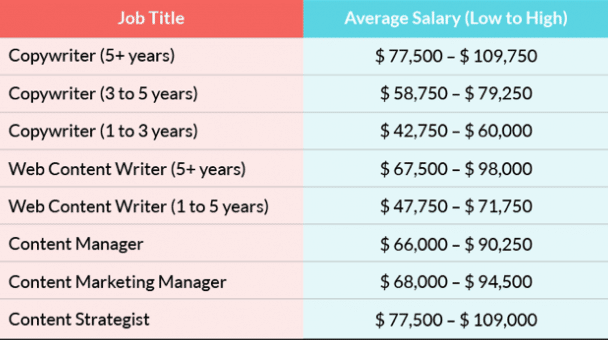
Our standard weekly blogging package is less than nearly every number on that table above! And we provide Keyword research, competitive reviews, headline creation, monthly reporting – in addition to the writing.
You can get around all of this cost just for the writing part by outsourcing your blog writing and save tens of thousands in your marketing budget in the process.
It’s worth noting that cheaper blog writing and cheap SEO aren’t always better. While you don’t have to break the bank outsourcing your content, which would defeat its entire purpose, you often get what you pay for. Better services hire more in-demand, experienced writers and vet their people carefully. In turn, they charge more to their clients, but it’s often worth it in the end.
Professional Writing Skills and Scalability
One of the best advantages of working with outsourced blog writers is the professional writing skills they bring to the table. While many business owners and CMOs fancy themselves good writers, writing a blog isn’t the same as writing ad copy, venture capital proposals, or even sales nurture emails.
Best Practice Blog writing today follows certain standard formats that make content easily consumed by readers, such as headings for “scan-ability” and bullet lists for easy summaries. There are stylistic conventions and other elements that most executives don’t employ on a regular basis. Professional blog writers know how to use all these tactics to make your posts attract and keep readers, as well as how to generate discussion in the comments section.
Blog services also come with proofreading and editing, so your copy is free of errors and is presented in a well-organized fashion. If you’ve ever read a blog that looked horribly unprofessional, you’ll understand how valuable this polishing is. It will also be run through a plagiarism algorithm. Reputable blog services don’t have writers that copy other work, but it is possible to accidentally include phrases that mimic others’ posts, which can mess with your SEO.
With a professional service, you also get assistance with SEO research and developing content topics. This can be a boon when it comes to getting more eyes on your website. Need matching social media posts, images, or infographics along with your blog content? Many agencies can provide that as well.
Do you have multiple businesses under one corporate umbrella, which entails maintaining many websites? This is no problem for a professional blog service because they’ll have multiple writers available to handle large volumes of content. You can scale larger as your business grows, too, and your blogging service will grow with you. Likewise, you can handle multiple tiers of the buying process and dedicate posts to different sales stages, just as you would with email nurturing.
The Best Writers for Your Business
Professional writers are all good, but how do you know they’d be able to passionately create content that’s just right for your business? Here are some things to look for when selecting the right blog writers for your needs:
- A reputable agency or service that can provide examples of work and/or names of clients they have worked with, preferably similar to your business
- Experienced, well-vetted writers who can commit to at least a year or two of work with you, so you don’t have to retrain new bloggers every few months
- Bloggers with experience in your niche – the more specialized your area, the more expertise the writers should have
- Ability to turn around content on a reasonable schedule that works for you
- In-house editing and project management, if your needs are complex or your volume is high
- A price that nets you solid talent while still allowing you to maintain high ROI
- Excellent communication so you can work as a team
In turn, your business should be able to reciprocate in places where it makes sense to do so. Your people should be equally accessible for questions and clarification. While you want timely responses to your messages, you need to understand most writing services are juggling multiple clients like you. The more you can schedule in advance, the easier it will be for your bloggers to accommodate your needs. Create reasonable turnaround schedules and leave time for edits, especially early on in the process.
Most CEOs and CMOs spend enormous segments of time trying to get the best return on investment from their marketing activities, when the highest ROI solution is literally at their fingertips. Outsourcing your blog and blogging frequently have virtually no downsides and are proven to increase profitability considerably. It can take a bit of time and energy to get the ball rolling, but once you set up a system with a blogging service, you’ll never want to go back to writing your own content again.
What Can A Blogging Service Do for Your Business?
Content marketing – of which blogs are a huge component – is one of the most effective lead generation strategies in the marketing world. An agency that writes your blogs for you will combine their industry knowledge with keen research abilities to create regular blog posts that leverage the blog writers’ abilities to communicate with your audience, and propose solutions that can help your customers solve the problems that keep them up at night.
Build Industry Authority and Customer Visibility
And you are good at what you do. Only problem – not enough of the right people know just how good you are. Blogging helps you showcase that expertise without spending a moment of your time.
Having a blog writing service builds your authority in your industry in the minds of people who might not even have heard of your company before you launch your blog. When you couple that exposure with your social media reach by posting links to each post on your social media pages, it’s sheer marketing magic.
Furthermore, with every blog post you publish, your visibility on your target customers’ searches rises. A blog writing service will know how to leverage the right keywords and metadata to get both search engines’ and your target audience’s attention.
Create Newsletter and Other Gated Content
Your blog writing team can also create extra content that you can send to your email newsletter subscriber list. These articles can take a deeper dive into material that you covered in your blog posts or provide insight into topics you haven’t yet covered in your blog posts.
As a vital component of your content marketing strategy, your email newsletter can serve as the next step along the customer journey for those people interested enough in your blog content to subscribe. Providing expertly written, highly informative information in every newsletter will spark even more interest in your company, positioning you as a thought leader in your industry.
An email newsletter works equally well for B2C companies as well as B2B businesses. Statistics show that email marketing yields a whopping 4,400 percent ROI, yielding $44 for every dollar spent.
In addition, you can expand these newsletter articles into new content, such as white papers and e-books, that delve even deeper into the subject matter for those considering a purchase. Here’s an example from Zillow:

Craft Account-Based Marketing Messages
For B2B companies, you can even repurpose your blog post into personalized content in one of today’s hottest marketing strategies – account-based marketing. With a blog writing service, you’ll have a team of writers who know your company and its work – and can craft content tailored to each decision-maker’s interest.
For example, you could send a manufacturing company’s head engineer an article about how your new widget can shave hours off the manufacturing process, while the chief financial officer would appreciate an infographic about how much money the company would save by putting your widget to work in the process. Their developer, though, would love an article about the way you put Agile methodology to use as your team created the device.

When B2B companies align their blog writing service with their sales team to leverage the power of account-based marketing, they’re likely to boost their ROI. Forty-two percent of all companies that do so experienced significantly higher ROI, while 42 percent of the companies experienced somewhat higher ROI.
Turn Your Expertise into Compelling Content
You and your teams have a ton of expertise in your field. A blog writing service can work closely with your teams to turn raw facts into compelling copy.
Let’s say that you’re a pharmaceutical company, and you’ve come up with a new cure for an emerging disease. Your blog writing team can work with your researchers to turn their latest study into easily understandable content that busy physicians and nurses can scan quickly.
Your blog writing service can take testimonials from physicians that have tried your new drug successfully and craft blog posts that patients can understand. With more information, patients can be more informed when they have conversations with their own physicians.
For startups, whose lean budget doesn’t leave much room for marketing, let alone a dedicated content writing team, having a blog writing service at their disposal can be a game-changer.
Repurpose Existing Content
Just like your other assets, your blog content can do double duty when you repurpose it in other formats. Use your blogging team to transform blog posts to how-to video scripts, to create catchy product and service descriptions for Instagram and Pinterest, and to rephrase the content as compelling personal stories on Medium. Take a video and turn it into a LinkedIn article that showcases your thought leadership.
A blog writing service has experienced content writers that can adapt your existing content into practically any written form you want. They can even rewrite past content to make it more search-engine friendly. That way, you can reach even more people who need your expertise.

Finally, when you hire a blog writing service, you won’t have the added expense of an in-house writing team, nor will you need to spend your time recruiting and onboarding each team member. With an outsourced blog writing subscription service, you’ll have a team of writers that someone whose expertise is content creation has recruited, tested, onboarded, and proven through project after project.
Overcoming Obstacles When Outsourcing Blog Writing
Naturally, there are a few downsides to using a blog writing service, but they’re fairly easy to overcome. These may be your own concerns, or they may come from colleagues or leadership from whom you need buy-in to continue.
Giving Up Control
For some CEOs or CMOS, hiring a professional blogger feels like ceding control over their blog. Yes, it’s true you don’t get to decide on every word of every post. But, the benefits you get, as outlined above, certainly outweigh any negatives.
Further, using a blog service frees up executives and managers to do jobs where they are probably already overloaded with work. They can travel, take meetings, and tend to other business while still knowing they’ll hit their blogging goals and calendar milestones. Leaders who feel the need to have greater control over their company blog may struggle with delegating in general and can use the blog as a way to play with that.
Using a pro blogger comes with built-in safeguards. As well as in-house editing, you, as the client, can ask for revisions, too. Ideally, you want to meet with your blogger first, so they are on board with your overall vision for the blog and changes after the first draft will be minimal. If you have ideas, an outline, or even a rough first draft in your own words, a professional blogging service can accommodate them and flesh out the material for you.
Diversity… or Continuity
Another common hesitation about using a blogging service comes from wondering if the blog will sound diverse enough. This is easily remedied by asking for several different writers to work on your team and rotating the work among them.
Similarly, if you have multiple blogs on various topics, you can request writers who bring their own personal expertise to those respective subjects. Many seasoned bloggers started out in other careers before turning to writing, and you’ll find writers with impressive CVs in finance, law, healthcare, technology, real estate, and many other areas.
Some businesses find a hybrid model works for them. They have their own employees write a few posts here and there, while paid outside bloggers do the rest.
But what if, conversely, you want your blog to have continuity of voice and vibe? Simple – either ask to have one writer work on your blog consistently or put together a detailed style guide with a few examples, so multiple writers adhere to the same framework, rules, and tone. Professional bloggers, just like authors who write fiction dialogue, know how to make a blog post sound like it’s emanating from a particular voice for brand recognition.
The hybrid system just mentioned also works for creating a unifying voice for your blog. You can always outsource your content and have your in-house staff edit it or smooth it out to give it your unique brand feel.
Blog Writing Service Case Study Examples
Oberer Homes, a builder in Dayton, Ohio saw increases in traffic, rankings and leads from their blog writing service.

Marketing Outsourcing leader Televerde saw 65% more leads and a 17% increase in lead conversion rate from our blogging service.
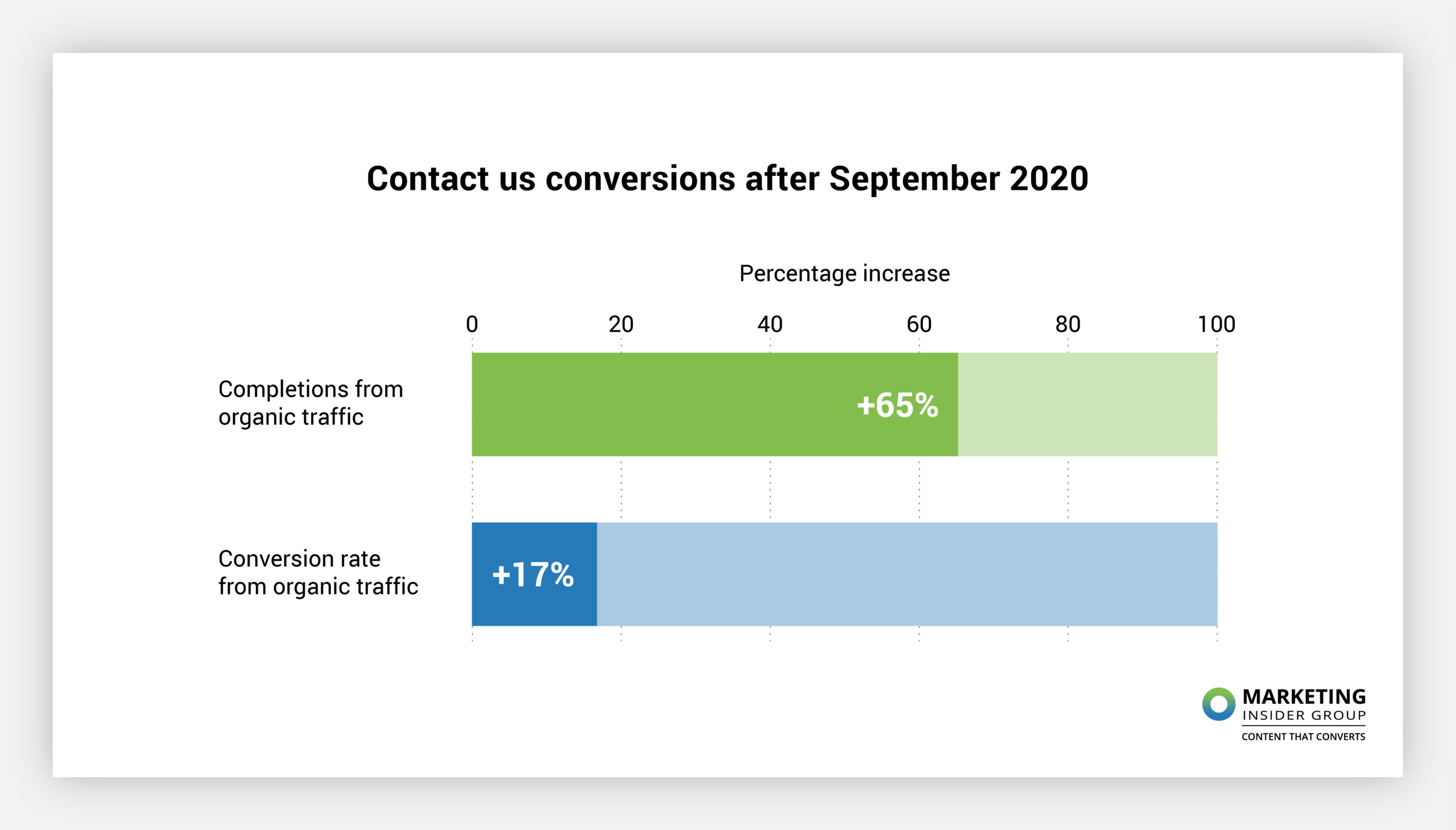
And finally, we use our own service to grow Marketing Insider Group. 75% of our leads come from blog page conversions. And while we are small, we are mighty when it comes to organic search traffic and rankings. We get more than a million visitors to our site each year and rank #1 for hundreds of relevant industry keywords
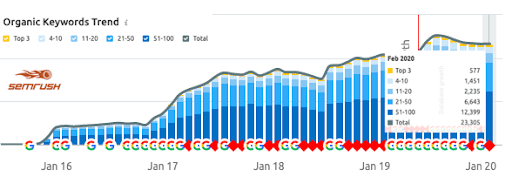
Sign Up Today For Your Blog Writing Service
If you are ready to get more traffic to your site with quality content that’s consistently published, check out our weekly blog content service or schedule a free consultation.
The post What Is A Blog Writing Service? (And Why Your Business Needs One) appeared first on Marketing Insider Group.

 The workshop started with a definition of Thought Leadership. As basic as it sounds, it’s important to set a baseline.
The workshop started with a definition of Thought Leadership. As basic as it sounds, it’s important to set a baseline.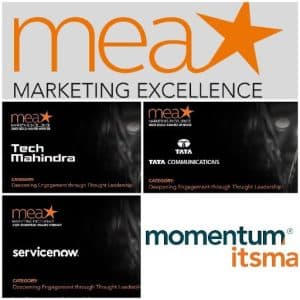 Momentum ITSMA Marketing Vision 2022 included the annual Marketing Excellence Awards. I was very proud to again be a judge for the “Deepening Engagement Through Thought Leadership “category. All the entrants presented a strong case for excellence in Thought Leadership showcasing innovation, collaboration, impressive results, and integration with other elements of their marketing leadership.
Momentum ITSMA Marketing Vision 2022 included the annual Marketing Excellence Awards. I was very proud to again be a judge for the “Deepening Engagement Through Thought Leadership “category. All the entrants presented a strong case for excellence in Thought Leadership showcasing innovation, collaboration, impressive results, and integration with other elements of their marketing leadership.
